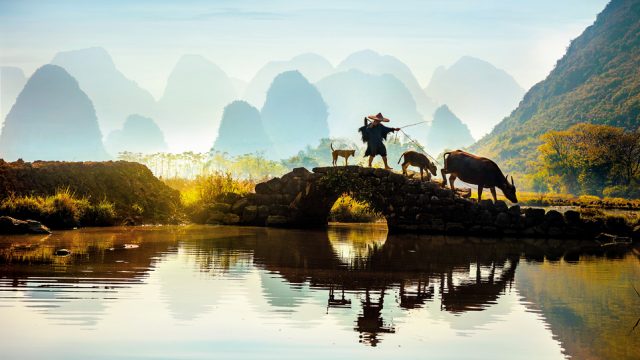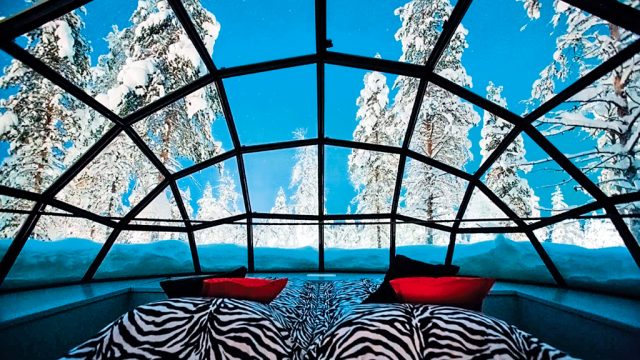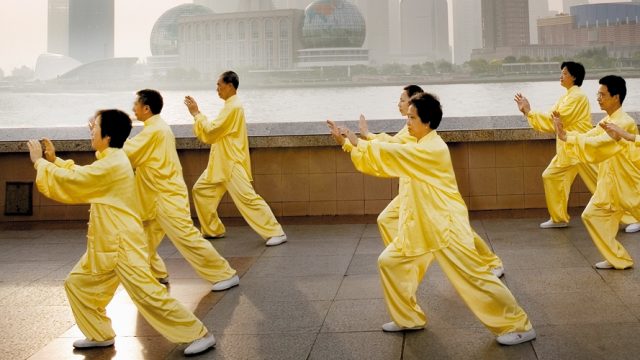My more modest Ming Courtyard suite, in the modern wing, consisted of two private courtyards, one with a gas fireplace, the other with a Japanese style soaking tub fashioned from a single slab of stone. Past the entrance, there was a comfy bed facing a flat-screen TV which could be tucked away discreetly behind wooden screens. The bathroom had not one but two vanities, a cosy shower cubicle and another bathtub. All this meant a fair number of light fittings and figuring out the correct switches was a bit of a learning curve for me, even though one of their nice guest executives ran me through the functions diligently. I would have much preferred one of those hi-tech solutions where everything is controlled from the screen of an iPad or similar. Aman Resorts has four properties in China now. Apart from Amanyangyun in Shanghai and Aman Summer Palace in Beijing, there’s Amandayan, Lijiang, informed by Nakhi culture and overlooking Lijiang’s old town, surrounded by snowcapped mountains and Amanfayun, Hangzhou, set in a centuries old village, offering a glimpse of traditional China near West Lake, a Unesco heritage site.





GETTING THERE
Both Air India and China Eastern fly direct to Shanghai Pudong International Airport from New Delhi. Amanyangyun is about 50min drive from the airport. I flew Air China via Beijing and can vouch for their effusive hospitality (as a bonus, I got to visit Aman Summer Palace, another stunning Aman Resorts property in China). I was also able to fly to Shanghai Hongqiao International Airport, which is just 30min from Amanyangyun.
The latest offering from Aman Resorts, Amanyangyun is situated in the Minhang district, 45min drive southwest of Shanghai’s city centre. Surrounded by a towering camphor forest and a tranquil lake, 13 antique villas and 24 Ming Courtyard suites are on offer. The property has been designed by Kerry Hill, while the landscaping is by Dan Pearson Studio. F&B venues include an Italian, a Japanese and a Chinese restaurant, the last serving authentic Jiangxi cuisine. There’s an IMAX cinema, a boutique offering jewellery, artwork and clothing by Chinese American designer Han Feng, a massive spa and a 200-seater banquet hall. Chinese cultural activities can be enjoyed at Nan Shufang.
From $944 (Ming Courtyard suite), taxes extra. Includes daily breakfast for two, return transfer to Shanghai airport, and replenishment of the minibar(excluding alcoholic beverages)once a day. Additional amenities for villas: 24 hours butler service, complimentary laundry (no drycleaning) and valet pressing service. Exclusive for the Antique Villa 4-bedroom and Qing Antique Villa 4-bedrooms: replenishment of minibar once a day (including alcoholic beverages and house wine cellar selection). Exclusive for the Antique Villa5-bedrooms, Ming Antique Villa 4-bedroom and Amanyangyun Villa 4-bedrooms: free-flow minibar setup (including alcoholic drinks and house wine cellar selection). CONTACT +86-21-80119999, aman.com
Downtown Shanghai is just a short drive away. You’ll have a hard time tearing yourself away from the sanctuary that is Amanyangyun but, if it’s your first visit, at least take a walk on the historic Bund and admire Pudong’s unreal skyline.
China
International
Amanyangyun





